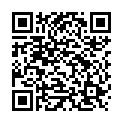|
|
|
| Module code: MST.NSW |
|
|
2V+2PA (4 hours per week) |
|
5 |
| Semester: according to optional course list |
| Mandatory course: no |
Language of instruction:
German |
Assessment:
Case studies and micro-projects with the applications discussed
[updated 19.02.2018]
|
KI672 Computer Science and Communication Systems, Bachelor, ASPO 01.10.2014
, semester 6, optional course, technical
KIB-NUMS (P221-0087) Computer Science and Communication Systems, Bachelor, ASPO 01.10.2021
, optional course, technical
KIB-NUMS (P221-0087) Computer Science and Communication Systems, Bachelor, ASPO 01.10.2022
, optional course, technical
MST.NSW (P221-0087) Mechatronics and Sensor Technology, Bachelor, ASPO 01.10.2012
, optional course, technical
MST.NSW (P221-0087) Mechatronics and Sensor Technology, Bachelor, ASPO 01.10.2019
, optional course, technical
MST.NSW (P221-0087) Mechatronics and Sensor Technology, Bachelor, ASPO 01.10.2020
, optional course, technical
PIBWI92 Applied Informatics, Bachelor, ASPO 01.10.2011
, semester 6, optional course, informatics specific
PIB-NUMS (P221-0087) Applied Informatics, Bachelor, ASPO 01.10.2022
, optional course, informatics specific
PIB-NUMS (P221-0087) Applied Informatics, Bachelor, SO 01.10.2026
, optional course, informatics specific
MST.NSW (P221-0087) Mechatronics and Sensor Technology, Bachelor, ASPO 01.10.2011
, optional course, technical
|
60 class hours (= 45 clock hours) over a 15-week period.
The total student study time is 150 hours (equivalent to 5 ECTS credits).
There are therefore 105 hours available for class preparation and follow-up work and exam preparation.
|
Recommended prerequisites (modules):
MST.MA1 Mathematics I
MST.MA2 Mathematics II
[updated 01.10.2012]
|
Recommended as prerequisite for:
MST.MA3 Mathematics III / Applied Mathematics
[updated 01.10.2012]
|
Module coordinator:
Prof. Dr. Gerald Kroisandt |
Lecturer: Prof. Dr. Gerald Kroisandt
[updated 01.10.2012]
|
Learning outcomes:
After successfully completing this module, students will be able to independently implement algorithms using Matlab to solve mathematical problems, process experimental data and display this data graphically.
[updated 19.02.2018]
|
Module content:
- Programming in Matlab
- Types of Matlab programs
- Graphical output in 2D and 3D
- Diagrams of statistical data and measurement data
- Symbolic calculations
Applications:
- Numerical integration
- Regression, interpolation and approximation
- Zero and fixed-point search
- Gradient method
[updated 19.02.2018]
|
Teaching methods/Media:
100% of the lecture will take place in the PC lab "Angewandte Mathematik, Statistik und eLearning". All of the practical exercises for the lecture, as well as solving exercises, homework and case studies will be done with the e-learning system MathCoach and with mathematical numerical software (AMSEL lab: PC lab: "Angewandte Mathematik, Statistik und eLearning").
[updated 24.02.2018]
|
Recommended or required reading:
F. und F. Grupp: MATLAB 7 für Ingenieure: Grundlagen und Programmierbeispiele
O. Beucher: MATLAB und Simulink: Grundlegende Einführung für Studenten und Ingenieure in der Praxis (z.B. Pearson Studium, 2008)
W. Schweizer: MATLAB kompakt (z.B. Oldenbourg, 2009)
Lecture notes
[updated 19.02.2018]
|


